The place of digital product organizations
Last Friday, we began the final block in the product management program at the Tramontana Institute.
We followed a micro-to-macro approach, so in this final block, we studied and discussed organizations, those places where the creation and development of digital products takes place.
Of course, everything we've seen before affects them.
And that's what makes them interesting.
In parallel, the teams continue to make progress on the final build of the program: in addition to individual exercises and group use cases both in class and at home, over the last six weeks, teams of 3-4 people brought into play a good number of the topics we've covered, selecting an opportunity, shaping it through a story, projecting their plan, and building it to serve as the icing on the cake with which we close the program.
 > Context is what allows us to connect and weigh the components. Digital organizations are VERY analog ----------------------------------------------- A good way to understand the frustrations that companies whose core business is a digital product often generate is to understand that they are organizations that are assimilating a CHANGE.
> Context is what allows us to connect and weigh the components. Digital organizations are VERY analog ----------------------------------------------- A good way to understand the frustrations that companies whose core business is a digital product often generate is to understand that they are organizations that are assimilating a CHANGE.
In the program, we connect this change with the nature of software, the information economy, and the pace of technological transformation.
Thus, within a contemporary company of this new type, there are other companies whose roots extend back to at least the first decades of the 20th century.
None of this, therefore, is foreign to them.
In this sense, we distinguish three main moments: before software, before the internet, and after the internet.
In the first moment, we recognize such significant elements as the machinery of modern times, Taylorism with its capacity for specialization and assembly line work, Fordism with its concern for efficiency and scaled-up processes, but also the industrial design trends embraced by the motto "Weniger aber Besser," so well represented by Braun's creations and which continue to have such influence today through such an outstanding figure as Dieter Rams.
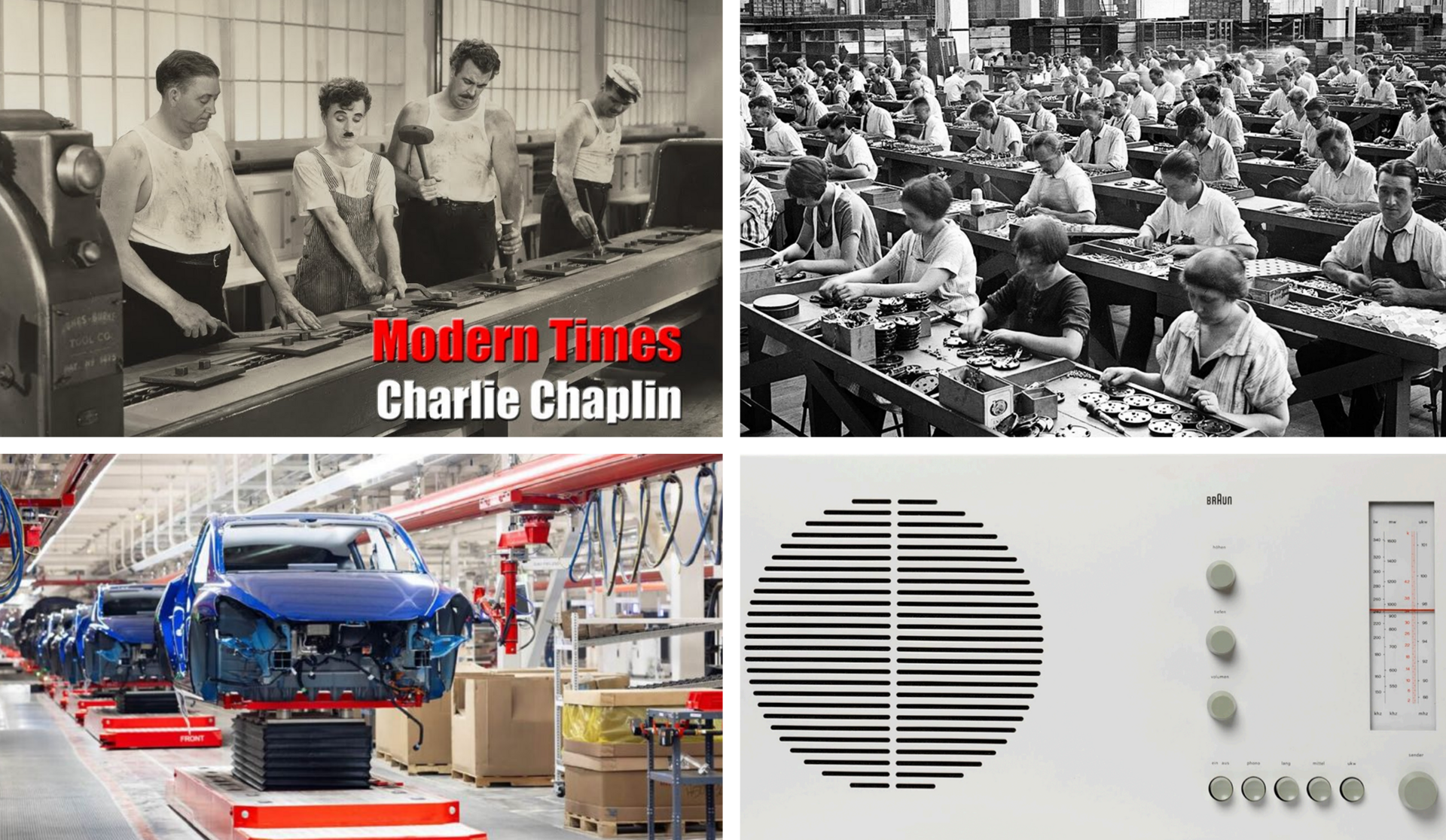 > What was done before software is not totally foreign to us. In the second moment, on the other hand, figures begin to emerge that synthesize some of the novel characteristics of organizations.
> What was done before software is not totally foreign to us. In the second moment, on the other hand, figures begin to emerge that synthesize some of the novel characteristics of organizations.
Peter Drucker is undoubtedly one of the most outstanding, as he was able to connect many of the dots of everything that was happening in those "informational organizations," which seemed to require new ways of thinking and doing.
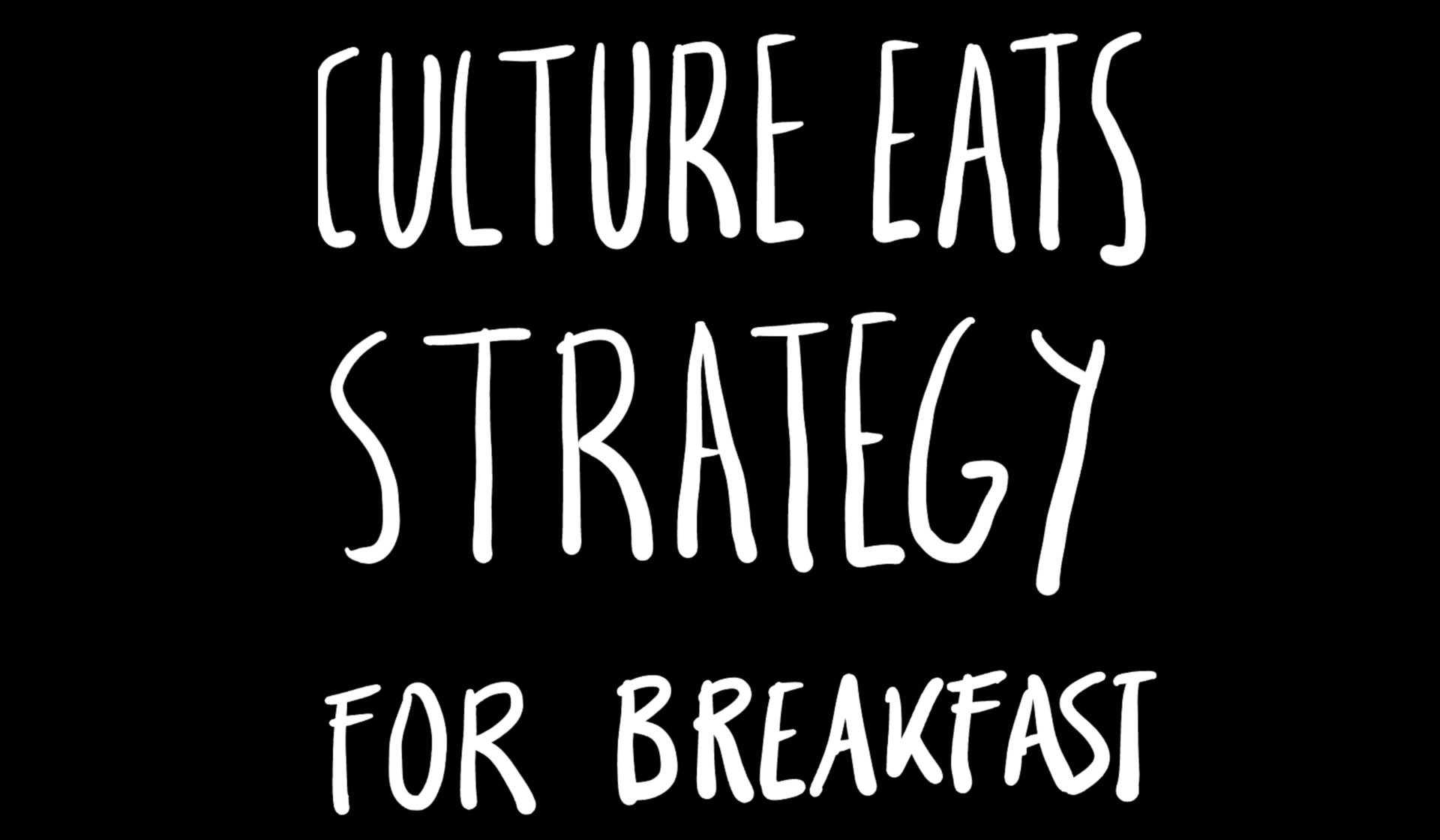 > Drucker coined the term "knowledge work" in his work The Landmarks of Tomorrow. It is in this context that his classic sentence "Culture" becomes relevant It's also the moment of Taiichi Ohno, with his reflections on work at Toyota as a way of thinking and not simply of being; his invention of a simple signaling system (Kanban), already so popular among many digital product teams; and his contributions to the thinking of flows starting from the end (working backwards), which gives rise to different currents around such interesting concepts as JIT (Just In Time) and Kaizen, and which subsequently connects so well with digital rhythms in that philosophy of avoiding waste.
> Drucker coined the term "knowledge work" in his work The Landmarks of Tomorrow. It is in this context that his classic sentence "Culture" becomes relevant It's also the moment of Taiichi Ohno, with his reflections on work at Toyota as a way of thinking and not simply of being; his invention of a simple signaling system (Kanban), already so popular among many digital product teams; and his contributions to the thinking of flows starting from the end (working backwards), which gives rise to different currents around such interesting concepts as JIT (Just In Time) and Kaizen, and which subsequently connects so well with digital rhythms in that philosophy of avoiding waste.
Likewise, a figure as influential as Andy Grove—although it would take a few decades to crystallize into a strong trend at the hands of John Doerr—, CEO of Intel and creator of the OKRs approach (Drucker had been a precursor with his MBOs, Management by Objectives) —will also show how new organizations demand another form of management and managers.
 > Ohno stressed the importance of inventing ways to organize teams like his popular U-Shaped Cells. The three main thematic trunks -------------------------------------- What began to be done from the internet is quite mixed.
> Ohno stressed the importance of inventing ways to organize teams like his popular U-Shaped Cells. The three main thematic trunks -------------------------------------- What began to be done from the internet is quite mixed.
In the program I distinguish three main trunks, more for an expository purpose than because they are really separate.
The first can be traced back to at least the 1950s, when software development methods began to be developed, eventually captured by the acronym IID: Iterative Incremental Development.
Over the decades, it has seen various reflections and realizations, all of them born within teams and companies primarily dedicated to software development, and therefore with a strong engineering flavor.
It connects in the 1990s with the core known as Extreme Programming, where the word "customer" had already been naturally incorporated into the vocabulary and where the approach emphasizes the importance of building what you need NOW rather than everything you could do in the future.
This is the trunk that eventually culminated in the Agile Manifesto a decade later, as well as in what later became known as Kanban.
[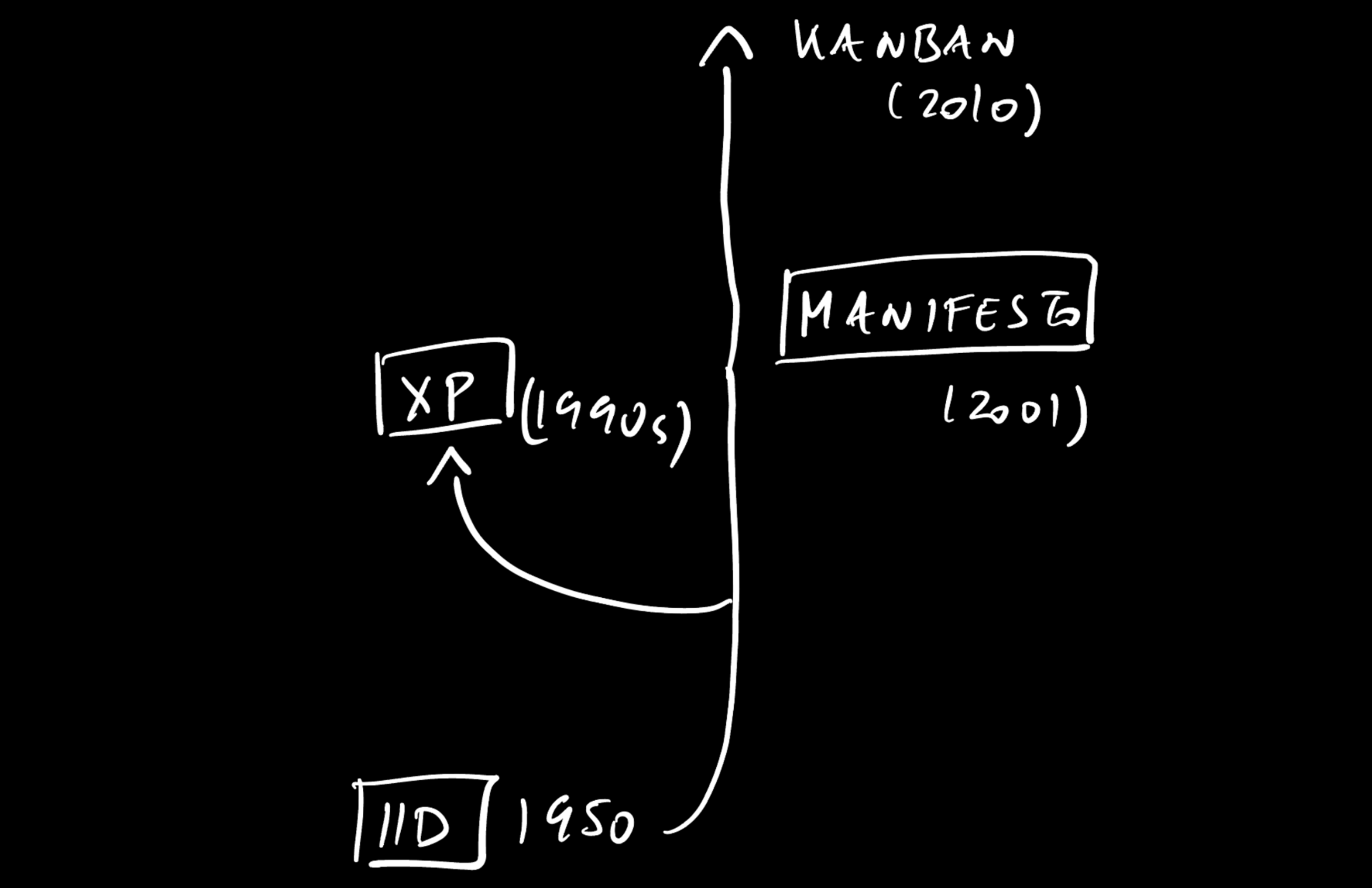 ](https://world.hey.com/inigo/345a466b/blobs/BAh7BkkiC19yYWlscwY6BkVUewdJIglkYXRhBjsAVGwrB13vEnlJIghwdXIGOwBUS SIMYmxvYl9pZAY7AEY=--a6a0afe6e03b4d3fa9d81aa3ce9e0fca524e99f8/Screenshot%202025-03-05%20at%2015.54.06.png?disposition=attachment "Download Screenshot 2025-03-05 at 15.54.06.png") > The Agile Manifesto begins in a very significant way considering that it was born in a context of technology and engineering: "Our highest priority is to satisfy the customer." The second trunk has as its origin Charette's reflections in the 90s, primarily focused on a simple yet powerful question, which largely captures the unease often generated by the software world: "Why Software Fails." This branch also connects with Extreme Programming, but in the 2000s it linked up with the lean branch, which would later culminate in the popularization of everything Eric Ries has encompassed under the "Lean Startup" paradigm.
](https://world.hey.com/inigo/345a466b/blobs/BAh7BkkiC19yYWlscwY6BkVUewdJIglkYXRhBjsAVGwrB13vEnlJIghwdXIGOwBUS SIMYmxvYl9pZAY7AEY=--a6a0afe6e03b4d3fa9d81aa3ce9e0fca524e99f8/Screenshot%202025-03-05%20at%2015.54.06.png?disposition=attachment "Download Screenshot 2025-03-05 at 15.54.06.png") > The Agile Manifesto begins in a very significant way considering that it was born in a context of technology and engineering: "Our highest priority is to satisfy the customer." The second trunk has as its origin Charette's reflections in the 90s, primarily focused on a simple yet powerful question, which largely captures the unease often generated by the software world: "Why Software Fails." This branch also connects with Extreme Programming, but in the 2000s it linked up with the lean branch, which would later culminate in the popularization of everything Eric Ries has encompassed under the "Lean Startup" paradigm.
[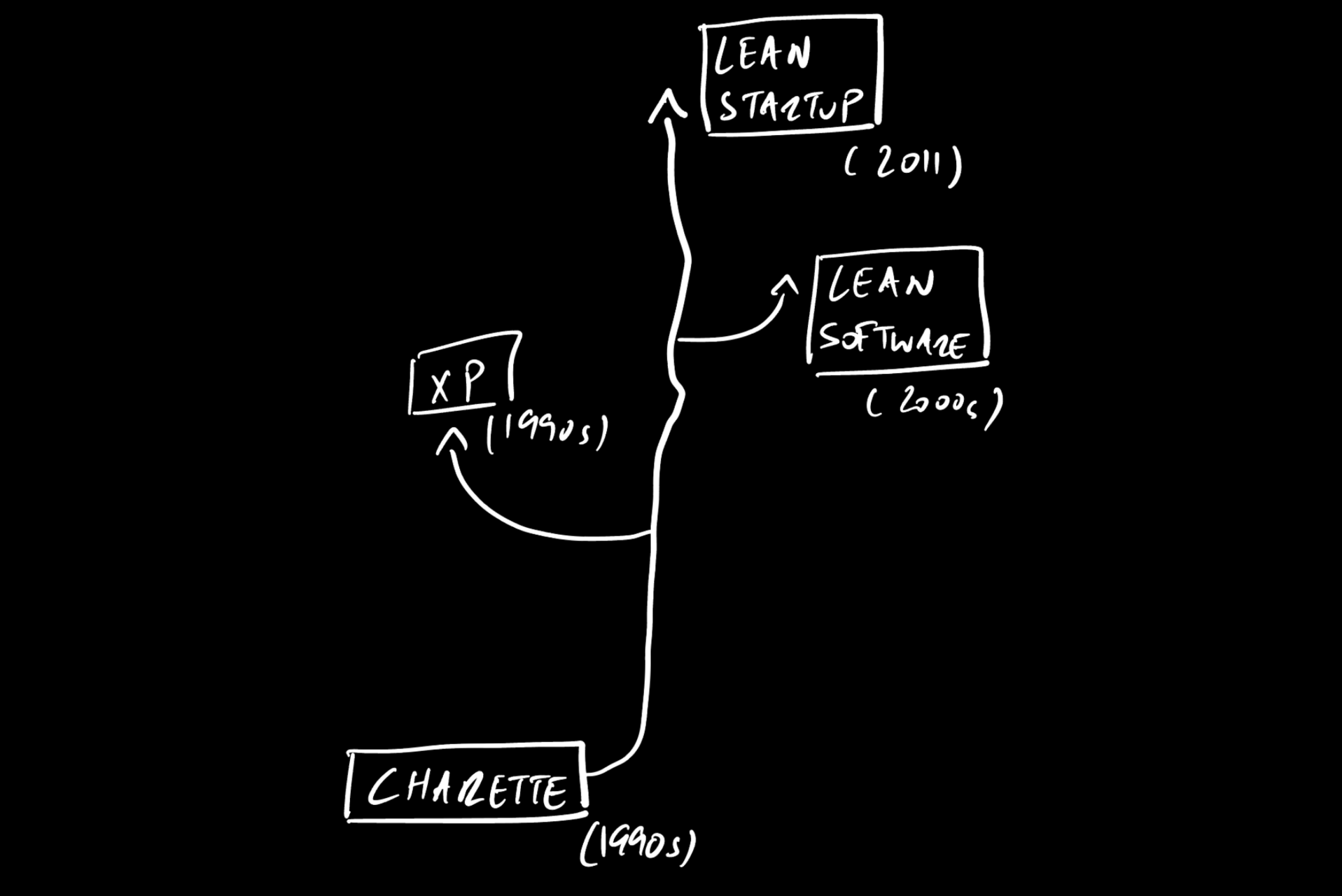 ](https://world.hey.com/inigo/345a466b/blobs/BAh7BkkiC19yYWlscwY6BkVUewdJIglkYXRhBjsAVGwrBwLxEnlJIghwdXIGOwBUS SIMYmxvYl9pZAY7AEY=--5587614b70b6fcc2d17b44138eb7ca3889cd25cc/Screenshot%202025-03-05%20at%2015.54.28.png?disposition=attachment "Download Screenshot 2025-03-05 at 15.54.28.png") > Eric Ries has popularized an understanding of organizations as learning systems where speed takes on special relevance: "The only way to win is to learn faster than anyone else." Finally, a third trunk originates in the 60s with The reflection, from different angles, of the so-called wicked problems.
](https://world.hey.com/inigo/345a466b/blobs/BAh7BkkiC19yYWlscwY6BkVUewdJIglkYXRhBjsAVGwrBwLxEnlJIghwdXIGOwBUS SIMYmxvYl9pZAY7AEY=--5587614b70b6fcc2d17b44138eb7ca3889cd25cc/Screenshot%202025-03-05%20at%2015.54.28.png?disposition=attachment "Download Screenshot 2025-03-05 at 15.54.28.png") > Eric Ries has popularized an understanding of organizations as learning systems where speed takes on special relevance: "The only way to win is to learn faster than anyone else." Finally, a third trunk originates in the 60s with The reflection, from different angles, of the so-called wicked problems.
This is the core of the concept that later extends to "design principles" and "problem solving" as broad areas, beyond the digital.
IDEO is possibly the reference that best synthesizes the different materials and concerns that move within this movement through its design thinking proposals, which have become popular and even become commonplace in numerous organizations.
[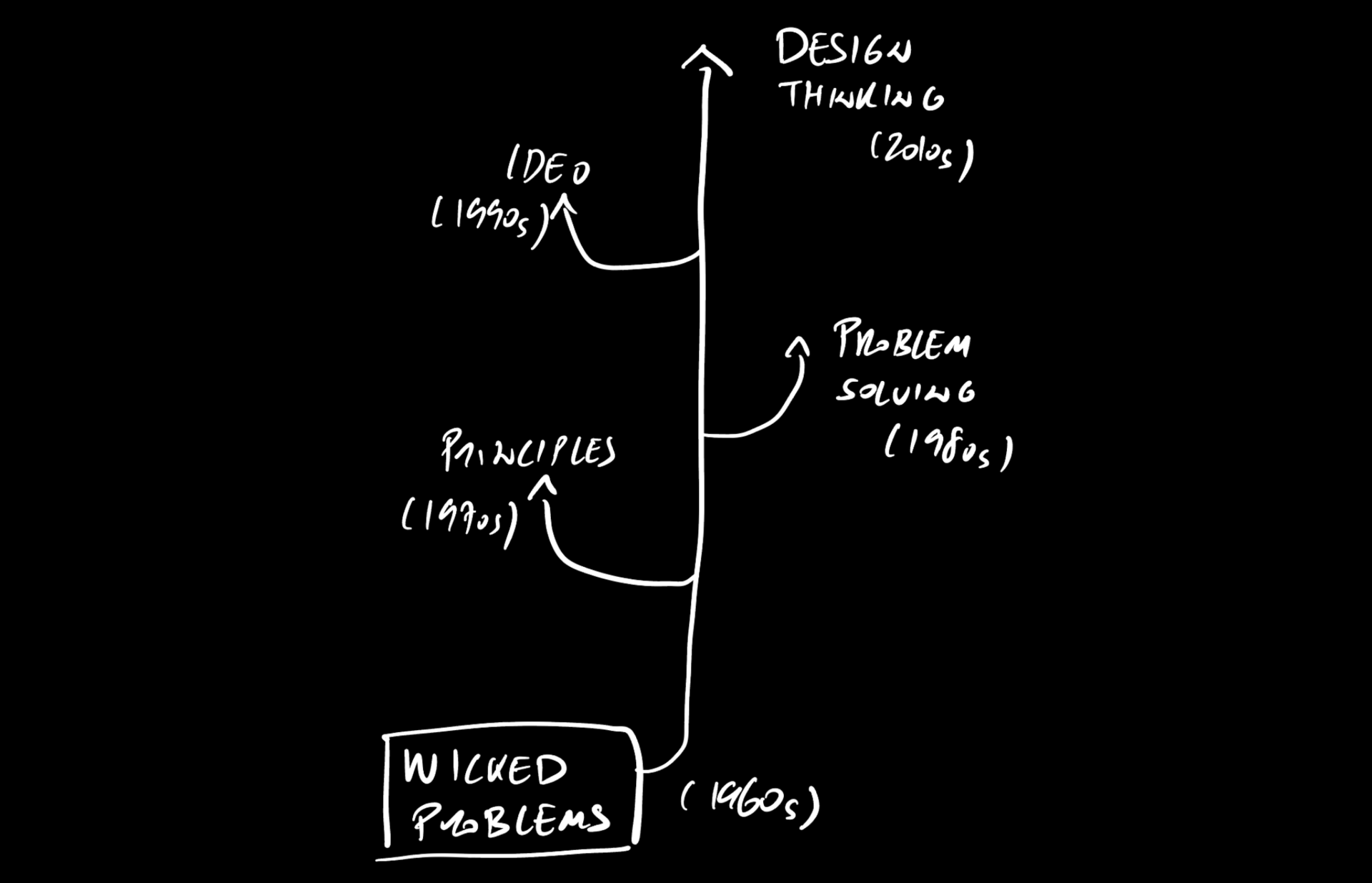 ](https://world.hey.com/inigo/345a466b/blobs/BAh7BkkiC19yYWlscwY6BkVUewdJIglkYXRhBjsAVGwrB3TxEnlJIghwdXIGOwBUS SIMYmxvYl9pZAY7AEY=--6e3b5bf9ae39ec87b7956257641524b8c715a7d7/Screenshot%202025-03-05%20at%2015.54.39.png?disposition=attachment "Download Screenshot 2025-03-05 at 15.54.39.png") > Weakly defined problems resonate especially well with creative, pragmatic, flexible, and collaborative people. Print your own stamp ----------------------- Organizations that pivot around A digital product is a sort of new archetype, but it's also the fruit of this history.
](https://world.hey.com/inigo/345a466b/blobs/BAh7BkkiC19yYWlscwY6BkVUewdJIglkYXRhBjsAVGwrB3TxEnlJIghwdXIGOwBUS SIMYmxvYl9pZAY7AEY=--6e3b5bf9ae39ec87b7956257641524b8c715a7d7/Screenshot%202025-03-05%20at%2015.54.39.png?disposition=attachment "Download Screenshot 2025-03-05 at 15.54.39.png") > Weakly defined problems resonate especially well with creative, pragmatic, flexible, and collaborative people. Print your own stamp ----------------------- Organizations that pivot around A digital product is a sort of new archetype, but it's also the fruit of this history.
Possibly, the three most dominant realizations—those that you'll eventually find in your organization, one way or another, mixed with these previous stratifications—also correspond to three companies that somehow represent them: Google and its Associate Product Manager Program (described in Eric Schmidt's book, "How Google Works"); Apple; Jony Ive and his emulation of design principles; and finally, Amazon and its business orientation.
In each, the distribution of factors (data, decisions, customer obsession, technology as the core, design as the principle of everything, etc.) takes on different proportions.
 Product management improves with an understanding of this history, as well as by reflecting on your own personal preferences for a particular model and what best suits your own organization.
Product management improves with an understanding of this history, as well as by reflecting on your own personal preferences for a particular model and what best suits your own organization.
Good.